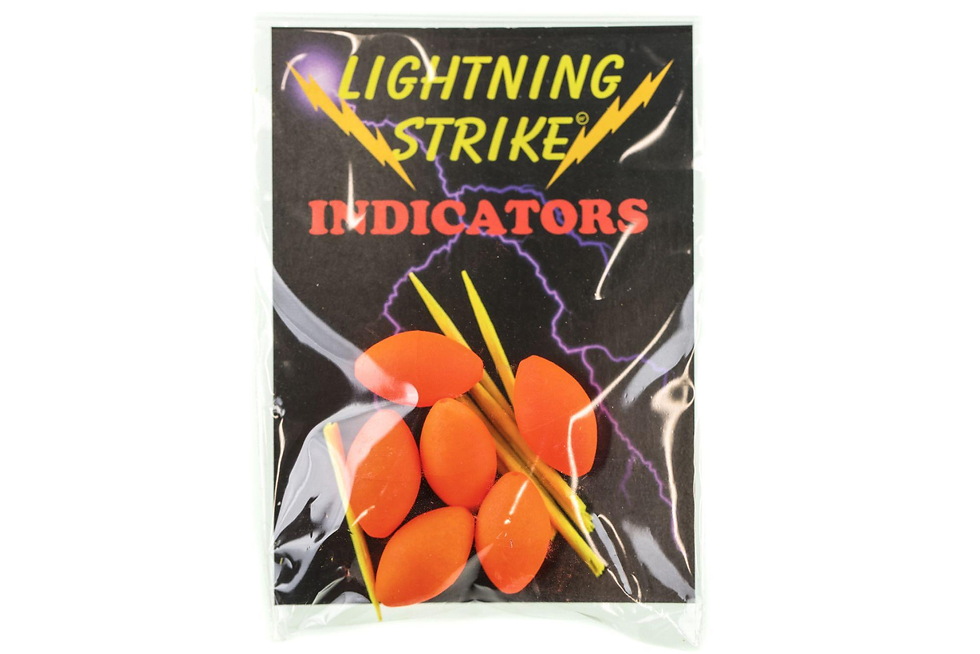Your Indicator Influences Your Drift Success
- Icon Productions
- May 21, 2024
- 4 min read
When I was just starting out fly fishing, I was content to just put any indicator on my fly line. The task of nymphing was too daunting to be concerned with something as seemingly as arbitrary as indicator choice. I saw what everyone else was using and followed suit.
But overtime, I noticed how many other anglers employed the same strategies, all of us sporting the same indicators, nymphing the same water, in search of the same fish. I also noted how countless fish physically move away from my casts as gaudy indicators were plopped over their heads. From there it didn’t take long to connect the dots and recognize that maybe the indicator I was using wasn’t the right option. I began to examine the available options in the indicator market. I tested the offerings, and settled on several favorites, but each had strengths and weaknesses.
There is no such thing as a perfect indicator. But you can carry a couple of different types to help you out in any river situation. This is my approach to identifying the right indicator for the right situation.

These guys are my all-around favorite small indicators, they are easy to apply and move as needed. I find that my leader grips the central rubber lining of these indicators well. They cast smoothly, and rarely do I notice the added indicator weight on my line. Even more important, they land softly on the water. I often use these indicators on technical tailwaters to prevent spooking fish. With small flies, this stealthy approach vastly outperforms large Thingamabobber style indicators. I have even toyed with the idea of adding a hook to them, as several fish have tried to eat this indicator in riffly waters. This is a great sign that fish aren’t concerned when these indicators float overhead. Ultimately, they work great for small, deep or even shallow water, if used properly. However, their light foam construction limits durability and lifespan.

Unlike other indicators, this system requires more prep-time, as you need to open a loop in your leader, insert the wool indicator material, and close in place with a short piece of plastic tubing. All in all, lightweight construction, perfect for shallow water, and situations that require the softest touch. I use this setup mostly for technical nymphing with small flies, as I don’t suspect they could hold up a stonefly very well. This approach is also customizable, with different wool colors available you can customize your approach depending on the situation. Casting further away where it’s hard to see? Orange and chartreuse wool help you notice strikes. Casting in close? White wool goes virtually unnoticed by trout. Dealing with low sun and heavy glare? Black wool stands out and helps you stay alert to potential takes.

This style of indicator floats very high and can support more weight than my other options, best suited for larger rivers, higher flows, and larger flies. My go-to color is always white, but with sun glare and water reflections, I am not afraid to use brighter colors. Plus, usually fishing deeper with heavier flies, I’m less concerned whether my indicator spooks fish. The deeper the water, the more comfortable trout feel. Still, I like white. I usually reserve orange/red for when I am having the hardest time following along. As you may already know, the Thingamabobbers loops through your leader causing a kink your line after extended use. Fear not, that kink is easily stretched out with a good tug at the end of the day. Still, a drawback with Thingamabobbers. On the other hand, the screw mechanism in Airlock and Oros indicators have multiple pieces, meaning you can lose something.
Any large indicator will lead to air resistance of your cast, so make sure you keep your loops open and water load whenever possible. I’d rather have an effective, ugly cast then be sidelined to untangle and re-rig my entire set-up.

If you ever find yourself fishing for stillwater trout, make sure you hunt down some slip strike indicators. Often on lakes, you’ll be fishing long leaders, much longer than your rod length. With standard indicators, you might get a fish close to the boat only to realize that your indicator is jamming at the tip of your rod, you need to pull in more line, but the indicator can’t fit through your eyelets. To address this limitation, slip style indicators are designed to move freely after you set the hook on a fish, allowing you to land fish on long leaders. If you ever expect to fly fishing lakes, especially in spring and fall, fish may be holding in water deeper than ten feet, and coming prepared with slip style indicators can greatly alleviate the struggles of landing your next trophy trout!
Decide What Works For You
Wherever you plan on nymph fishing next, consider how different indicators may help or hurt your approach. If fish are rising, look to implement smaller indicators to match the emerging insects. If water is cold and you need to fish deeper with lots of split shot, you’ll want a larger indicator to balance your rig. Indicators are easy to pack, easy to change out, and might just make the difference if you find yourself on a crowded stretch. So why not carry a couple of options?
Author Bio:
Andy Witt, scientist and angler obsessed with chasing and understanding all gamefish, writes on the intersection of science, conservation, and fly fishing for Due West Anglers, based out of Denver, CO.



Comments